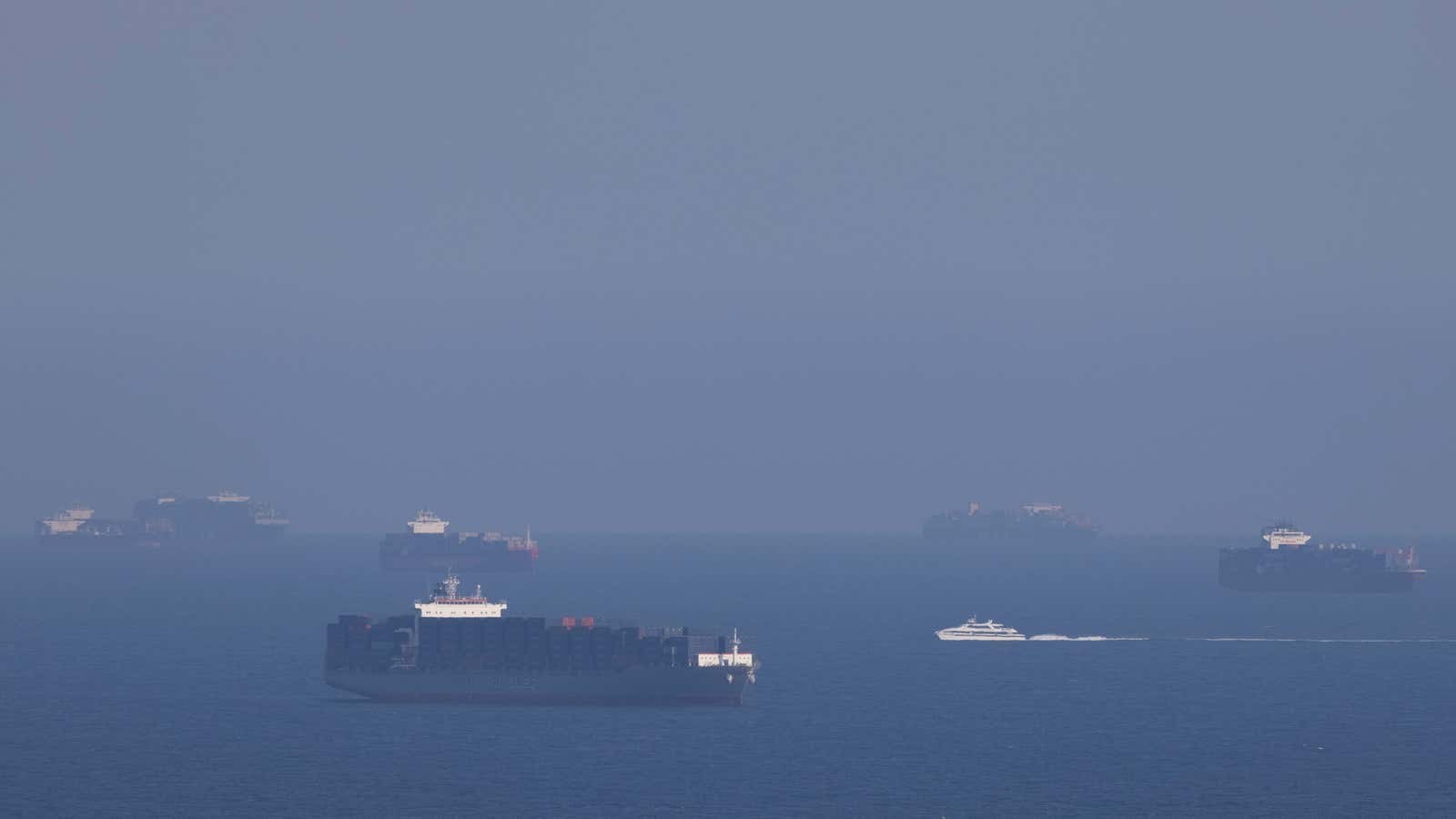The container ships stuck in San Pedro Bay, off the coast of the Ports of Los Angeles and Long Beach, have become a potent symbol of a broken supply chain. But in mid-November, there appeared to be a remarkable drop in the number of ships in the logjam at the busiest container ports in the US.
On Nov. 16, there were 86 ships in San Pedro Bay. But by Nov. 22, there were just 60, a 30% drop. (Before the supply chain crisis, there were few, if any, ships anchored off the ports.) President Joe Biden had recently announced government intervention that would allow the Port of LA to run for 24 hours, and the ports had instituted a fine to discourage containers lingering on the docks.
This seemed to many, including the executive director of the Port of Long Beach, a sign that what they were doing to fix the supply chain is working.
“I think it’s a fair representation that there’s been progress,” Mario Cordero told CNBC on Nov. 24, “As you just noted, the president referencing the fact that the vessels at anchor have been diminished. We’re having some progress in addressing the capacity constraints at the terminals in the San Pedro Bay complex, particularly here at the Port of Long Beach.”
It happened almost by magic, but it was a mere counting trick.
Where have all the ships gone?
Ships used to be counted as being “at port” when they were within 40 miles of the adjacent ports of LA and Long Beach, and got their place in line on a first come-first served basis. But on Nov. 15, the Marine Exchange of Southern California, an organization that monitors ship arrivals at southern California ports, issued a new queueing system that allowed ships to secure a spot to pull into berth before entering the 40-mile zone. To reduce the amount of pollution being pumped into the neighborhoods near the port, ships were then asked to loiter beyond the horizon, 150 miles from the port.
For some ships this meant dropping anchor 151 miles away. Other ships waited it out even further afield. Some took a leisurely route, steaming slowly across the Pacific, or waited in the waters off Mexico or Taiwan, according to American Shipper, a trade outlet.
The ship congestion in San Pedro Bay looked to have eased, but in fact was hitting some of its highest numbers. By Dec. 5, there were 96 ships waiting to enter the ports of LA and Long Beach, 56 of them outside the 40-mile zone. An additional 31 ships were docked and in the process of being unloaded, bringing the tally up to 127.
The supply chain crisis may not yet be fixed, but yesterday (Nov. 5), the Marine Exchange of Southern California decided to update its counting methodology to include ships outside the 40-mile zone. And just as quickly as it arrived, the “improvement” in port congestion vanished.
